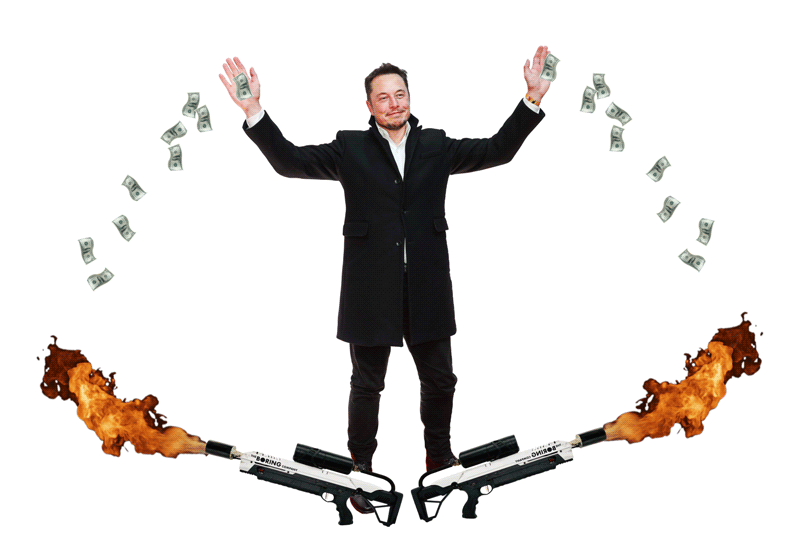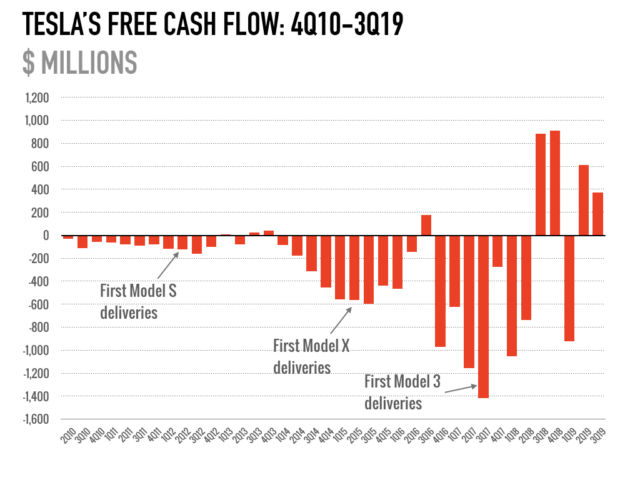Original: How Tesla proved the haters wrong
Tesla stock surged past the $ 400 mark for the first time in history last Thursday. Record mark, record capitalization. A decade later, we can say that Tesla haters were wrong.
In early 2010, Tesla built just under 1,000 of its expensive Tesla Roadsters. There were still years before the Model S was released. At that time, Tesla's financial position remained precarious, the company was experiencing problems that almost led to bankruptcy in 2008. At that time, hardly anyone thought that Tesla could become one of the leading car manufacturers in the world.
Indeed, over the past 10 years, people have been constantly predicting that the company is about to run out of money and will not be able to grow. People say that quality problems and multiple missed deadlines will lead customers to turn their backs.
But Tesla has proven the critics wrong. It's true that the company is constantly missing deadlines, and quality issues are not fiction. But these failures have little to no impact on customer enthusiasm. Tips like instant acceleration, firmware updates over the air, wide charging network are convincing for most wealthy fans to fork out.
As time goes on, Tesla finds itself in a stronger position every year. The company recently started production at its second plant in Shanghai, as well as work at its third plant in Berlin. And in recent quarters, Tesla was even able to show a small profit, and this is given the fact that the state (USA) has cut subsidies for electric cars.
Car manufacturing is an extremely capital intensive business. Tesla had to raise billions of dollars as the company moved from selling a niche sports car to a mass market with the launch of the Model 3. Meanwhile, the company's stock soared. From the IPO to 2010, they grew to $ 17, then began to cost more than $ 100 at the end of 2013, and in 2019 their price exceeded $ 400.
This rally in stocks has made Tesla a favorite short target. Investor Jim Chanos, who made a name on predicting the fall of Enron, said in an interview back in 2015 that the company was overvalued. At that time, the share price was $ 220. Tesla continued to actively borrow money to create the Model X and Model 3, the cash flow went into negative territory, but the share price was still growing.
Pessimism about the company's financial viability peaked in April 2018 when Bloomberg published an article titled 'Tesla Burns Investor Money, Not Fuel.' The article contained a rough cartoon in which Elon Musk burns money with flamethrowers. At this point, Tesla was burning more than a billion dollars every quarter as it ramped up production of the Model 3. Most were thinking that the company was most likely on the verge of bankruptcy.

Source: bloomberg.com
At the same time, Elon Musk posted his infamous tweet that he wanted to buy back the shares at $ 420 apiece and make the company private again. Along the way, people discussed the impressive list of top managers who have left the company in recent months. In September 2018, CNBC estimated that 41 top executives had left since the beginning of the year.
However, Tesla was able to reassure investors with a lucrative third and fourth quarter of 2018.
Most of the critics focused on the negative cash flow of the company but overlooked a major detail. Automakers are forced to spend billions of dollars on design and manufacturing before the first car rolls off the assembly line. And this is exactly what we saw before the launches of each of the three models presented (see graph below).

Skeptics, of course, were not happy with this explanation, and they did not get tired of repeating that Tesla makes meager profits by selling its emission quotas to other automakers. And this is not a source of profit that you can rely on in the future.
However, Tesla's losses largely reflect the company's rapid growth. If she chose to rest on her laurels after launching the Model S, she could probably get a small but steady stream of sales revenue. Likewise, if Tesla hadn't launched the Model 3, the S and X models would have enjoyed significant profits over the past five years.
Tesla's decision to start production of a new car as soon as the old one started making a profit led to a decade of continuous losses. At the same time, the company moved from producing expensive cars to the mass market. And machines for the mass market have a much higher initial production cost. So it's no surprise that all profits have evaporated as a result of the Model 3's increased production.
However, it should be remembered that although the Model 3 at the first stage has higher costs, and since the car is massive, the profit from it is less, but subsequently Tesla can make more profit due to the scale of sales. The Model 3 is cheap enough that millions of people can afford it. And electric cars are gaining popularity. For example, in 2018, almost 400 thousand different electric cars were sold.
Tesla's first cars were expensive as the company wanted to offer a range comparable to traditional ICE vehicles. And that required a lot of batteries, which were expensive.
But over time, the price of batteries dropped. BloombergNEF has released an annual report on battery prices. In 2010, 1 kilowatt cost more than $ 1,100. In 2015, the price dropped to $ 373, in 2019 – already $ 156 per kilowatt. So see for yourself. For example, the Model 3 has batteries ranging in size from 54 to 75 kilowatts, so it turns out that Tesla spends 8-10 thousand dollars in production only on batteries. You can calculate how much such a battery would have cost in 2010.
BloombergNEF calculated that in 2023 the cost of 1 kilowatt will fall below the $ 100 mark. If this happens, it will immediately automatically cut a significant share of production costs. And this, in turn, will lead to the fact that the company will begin to receive more profits.
In theory, Tesla has an edge over other automakers. Those just grasp the basics of electric cars, and Tesla has tremendous experience under its belt. Also, no other company has such a wide charging network. Tesla also regularly releases updates that allow you to squeeze out more performance, and also bring a variety of new features (not always useful, but fun). No other company has yet mastered this technique.
And then there's the customer loyalty factor. Tesla ownership has a special character that no other car company can match. Even if other car manufacturers can duplicate most of the specifications of Tesla vehicles, a fair amount of people will still be willing to pay more to be said to own Tesla.
Conclusion
I agree with the author of the article in everything. The point about making a profit due to the decline in battery costs is pretty slim. First, other major automakers have much more headroom and may start to cut prices. Secondly, despite the fact that Tesla cars are already available to many, they are still representatives of the middle class. And given the legislation banning cars with internal combustion engines by 2030 in different countries, the world will soon need a lot Kia Rio on electric traction.
However, there is also a positive moment, since Elon Musk is actively engaged in the creation of his own factories for the production of batteries. Accordingly, it cannot be ruled out that other automakers will buy batteries from Tesla in the future. The company will follow the path of Samsung, which sells screens, for example. The best ones are kept by Samsung, and the previous generations are sent to the market. And also can make custom screens for Apple. Tesla can do the same. Taking into account the fact that the electric car market is no longer a fiction, but a reality that the world is heading towards, gigafactories for the production of batteries will provide Musk with a stable income in the future.
